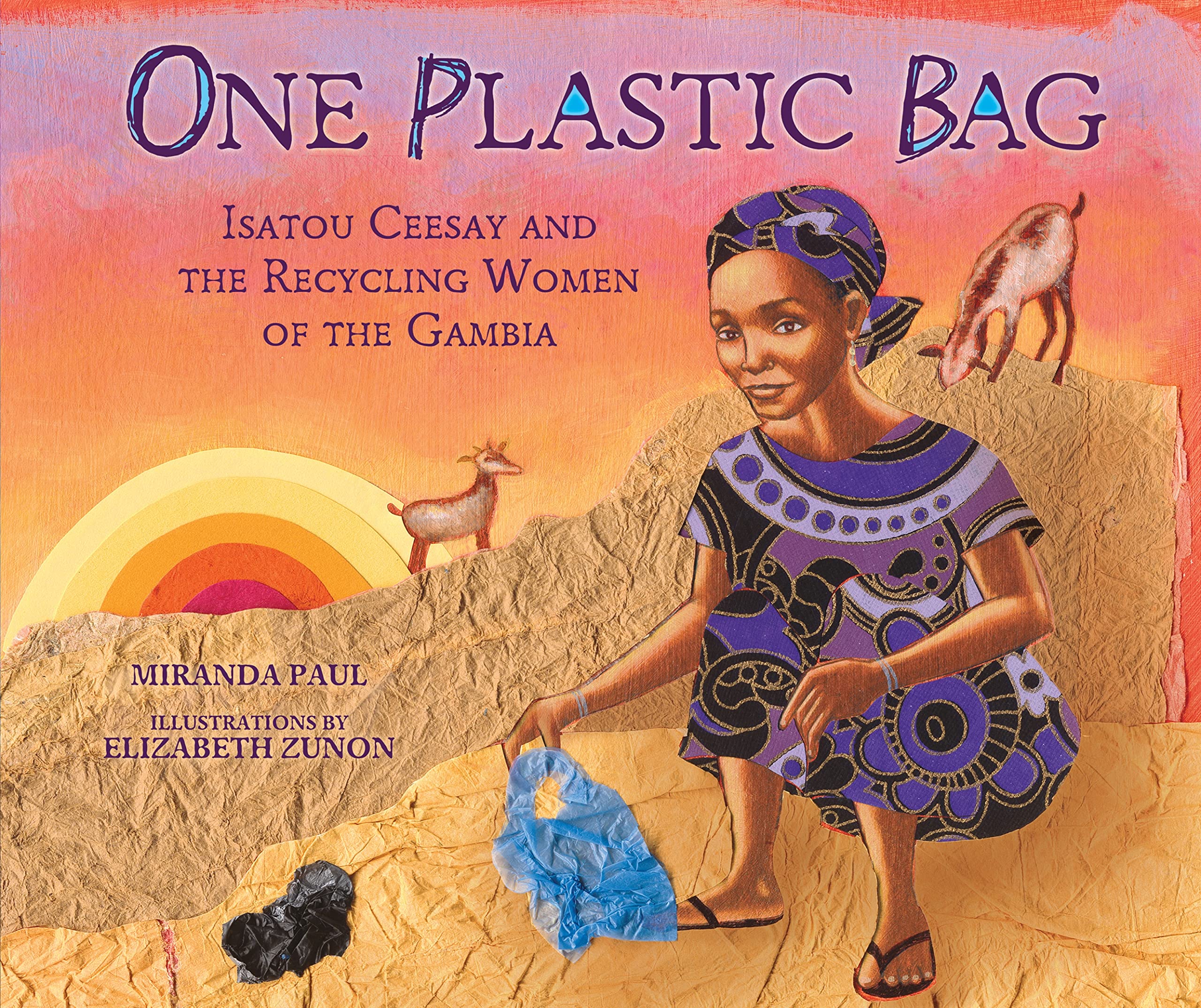SEL Read Aloud: One Plastic Bag by Miranda Paul

Summary
One Plastic Bag by Miranda Paul tells the inspiring true story of Isatou Ceesay, a woman from Gambia who transformed her community through creativity and perseverance. In her village, plastic bags were everywhere—they littered the ground, strangled gardens, and caused harm to animals. People didn’t know how to get rid of them, so they kept throwing them away.
Isatou saw the damage and wanted to make a change. She began collecting the plastic bags and, with a few other women, learned how to wash them, cut them into strips, and crochet them into bags and purses. Despite people laughing at her at first, Isatou continued her work. Her efforts not only helped clean up the village but also created new jobs and inspired environmental action.
Through this story, readers learn the power of one person to make a big difference. Isatou’s journey teaches us about environmental responsibility, innovation, and the courage to stand up for what is right, even when others doubt you.
Comprehension Questions
Six questions aligned to Bloom’s taxonomy for teachers to evaluate students’ comprehension.
- Remembering: What problem did Isatou notice in her village?
- Understanding: Why were plastic bags harmful to the environment and animals?
- Applying: If your community had a pollution problem, what is one creative way you might help solve it?
- Analyzing: How did people’s attitudes toward Isatou change over the course of the story?
- Evaluating: Do you think recycling the bags into purses was a good solution? Why or why not?
- Creating: Invent a new product that could be made from recycled materials in your home or school.
CASEL Discussion Questions
Five questions aligned to the CASEL competencies for teachers to foster an engaging discussion and social-emotional learning.
- Self-Awareness: How do you think Isatou felt when people laughed at her idea? Have you ever had an experience like that?
- Self-Management: What helped Isatou keep going even when others didn’t believe in her?
- Social Awareness: Why is it important to take care of the environment in our communities?
- Relationship Skills: How did working with other women help Isatou succeed in her mission?
- Responsible Decision-Making: What choices did Isatou make that helped both people and the planet?
Hands-On Challenge
Take students’ learning even further by incorporating a tangible, creative project.
Create a Recycled Product
Understand
Begin by reading One Plastic Bag by Miranda Paul. Talk about how Isatou noticed a problem in her community and took action, even when it was difficult. Emphasize the power of creative thinking and teamwork in solving environmental issues.
Ask students to reflect on:
- What made Isatou decide to reuse the plastic bags?
- What challenges did she face along the way?
- How did her actions benefit the environment and the people in her village?
- Why is it important to find ways to reuse or recycle materials?
Ideate
Now, students will think of a simple product they can create from recyclable or reused materials, just like Isatou did. Challenge them to design something useful out of materials like plastic wrappers, cereal boxes, bottle caps, or old paper.
Ask students to brainstorm:
- What items in your home or classroom often get thrown away?
- How could you turn one of these items into something new and helpful?
- What tools and supplies would you need to build your idea?
- How will your product help people or the environment?
Prototype
Students will create their recycled product using accessible materials. This could be a pencil holder from a can, a wallet from a juice carton, or a toy made from scrap paper and cardboard. Provide tape, scissors, glue, and coloring tools to help them build.
Instructions for students:
- Choose a recycled material and sketch your idea.
- Begin cutting, folding, and assembling your design.
- Think about how to make it strong and useful.
- Don’t worry if it doesn’t work perfectly the first time—just keep improving it!
Test & Present
Once the projects are built, students will present their recycled creations to the class. They should explain what they made, how it works, and what problem it helps solve.
During the presentations, ask students to:
- Describe the materials they used and why they chose them.
- Share any challenges they faced while building.
- Talk about how their product helps reduce waste.
- Offer positive feedback and ideas to help classmates improve their projects.
Read Aloud
If you appreciated getting to read this book with your class, you might also want to share this book with them!
Additional Resources
Copyright Notice
The image on this page comes from the book One Plastic Bag by Miranda Paul. Copyright © 2017


